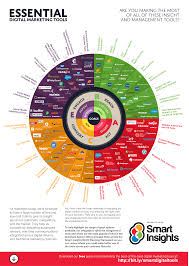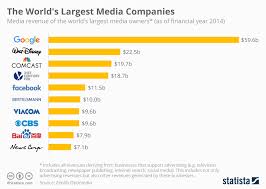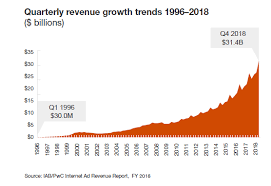Digital advertising has become an essential part of any modern marketing strategy. With the rise of the internet and the increasing use of mobile devices, businesses have had to adapt their advertising methods to reach consumers where they spend most of their time: online.
Digital advertising offers many advantages over traditional advertising methods. For one, it allows businesses to target specific demographics and interests with greater precision. This means that ads are more likely to be seen by people who are interested in what they have to offer, resulting in higher conversion rates.
Another advantage of digital advertising is its cost-effectiveness. Traditional forms of advertising, such as television or print ads, can be expensive and may not reach as many people as digital ads can. Digital ads can be tailored to fit any budget and can be easily adjusted or scaled up depending on their effectiveness.
One of the most significant benefits of digital advertising is its ability to provide real-time analytics and feedback. Businesses can track how many people see their ads, how many click on them, and how many convert into customers. This data allows for immediate adjustments to campaigns that are not performing well, resulting in better ROI.
There are several types of digital advertising available today, including search engine marketing (SEM), display ads, social media ads, video ads, and native ads. Each type has its own unique advantages and can be used to target different audiences effectively.
Search engine marketing involves placing text-based advertisements at the top or bottom of search engine results pages. These ads are triggered by specific keywords related to the business’s products or services.
Display ads are graphical advertisements that appear on websites or apps. They can take various forms, including banner ads or pop-ups.
Social media advertising involves placing advertisements on social media platforms such as Facebook or Instagram. These platforms allow businesses to target specific demographics based on interests, behaviors, and other factors.
Video advertising involves placing video content in front of viewers before or during online videos. These videos can be targeted to specific demographics or interests, making them highly effective.
Native advertising involves placing ads that blend in with the content of a website or app. These ads are designed to look like regular content and can be highly effective in engaging viewers.
In conclusion, digital advertising has become an essential part of any modern marketing strategy. Its cost-effectiveness, precision targeting, and real-time analytics make it a powerful tool for businesses looking to reach their target audience effectively. With so many different types of digital advertising available today, businesses can choose the methods that work best for them and achieve their marketing goals with greater ease than ever before.
Digital Advertising 101: Answering 7 Common Questions
- What is digital advertising vs digital marketing?
- What is digital advertising and how does it work?
- What are the 4 steps of digital advertising?
- What are the 4 types of advertising?
- What is the purpose of digital advertising?
- What are examples of digital ads?
- What are the two types of digital advertising?
What is digital advertising vs digital marketing?
Digital advertising and digital marketing are two related but distinct concepts. Digital advertising refers specifically to the use of paid advertising methods to promote a business or product online. This can include search engine marketing (SEM), display ads, social media ads, video ads, and native ads.
Digital marketing, on the other hand, is a broader term that encompasses all marketing efforts that use digital channels to reach customers. This includes both paid and organic methods of promotion, such as search engine optimization (SEO), content marketing, email marketing, social media marketing, and more.
While digital advertising is a subset of digital marketing, it focuses solely on paid advertising methods. In contrast, digital marketing includes both paid and non-paid methods of promotion.
Both digital advertising and digital marketing are essential components of any modern marketing strategy. However, businesses must carefully consider their goals and target audience when deciding which methods to use. Paid advertising can be highly effective in reaching specific demographics quickly, but it can also be costly. On the other hand, organic methods may take longer to yield results but can be more cost-effective in the long run.
In summary, digital advertising refers specifically to paid online advertising efforts while digital marketing encompasses all online promotional efforts – both paid and organic – used to reach customers through various channels.
What is digital advertising and how does it work?
Digital advertising is a form of advertising that uses digital platforms such as search engines, social media, websites, and mobile apps to deliver promotional messages to consumers. It involves the use of various digital channels to reach and engage with potential customers.
Digital advertising works by displaying ads to users based on their online behavior and interests. Advertisers use data such as search history, browsing behavior, and social media activity to target specific audiences with relevant ads. This data is collected through cookies and other tracking technologies.
There are various types of digital advertising formats available, including banner ads, video ads, social media ads, native ads, and search engine marketing (SEM) ads.
Banner ads are graphical advertisements that appear on websites or apps. They are often placed at the top or bottom of a web page and can be static or animated.
Video ads are advertisements that appear before or during online videos. They can be displayed on websites or within mobile apps.
Social media advertising involves placing advertisements on social media platforms such as Facebook or Instagram. These platforms allow businesses to target specific demographics based on interests, behaviors, and other factors.
Native advertising involves placing ads that blend in with the content of a website or app. These ads are designed to look like regular content and can be highly effective in engaging viewers.
Search engine marketing (SEM) involves placing text-based advertisements at the top or bottom of search engine results pages. These ads are triggered by specific keywords related to the business’s products or services.
Digital advertising also uses real-time analytics to track ad performance and adjust campaigns accordingly. Advertisers can monitor metrics such as click-through rates (CTR), conversion rates, and return on investment (ROI) to optimize their campaigns for maximum effectiveness.
In conclusion, digital advertising is an essential component of modern marketing strategies. Its ability to target specific audiences with relevant messages makes it highly effective in reaching potential customers. By using real-time analytics to track performance metrics, advertisers can optimize their campaigns for better results and achieve their marketing goals more effectively.
What are the 4 steps of digital advertising?
The four steps of digital advertising are:
Define your target audience: The first step in digital advertising is to identify your target audience. This involves understanding the demographics, interests, and behaviors of your ideal customer. By defining your target audience, you can create ads that are more likely to resonate with them and lead to conversions.
Choose the right ad format: There are several types of digital ads available, including display ads, search engine ads, social media ads, video ads, and native ads. Each type of ad has its own unique advantages and can be used to target different audiences effectively. Choosing the right ad format is crucial for achieving your marketing goals.
Set a budget and bid strategy: Once you have identified your target audience and chosen the right ad format, it’s time to set a budget for your campaign. You’ll also need to decide on a bidding strategy that determines how much you’re willing to pay for each click or impression on your ad.
4. Analyze and optimize: The final step in digital advertising is analyzing the performance of your campaign and making adjustments as needed. This involves monitoring key performance indicators such as click-through rates (CTR), conversion rates, cost per click (CPC), and return on investment (ROI). By analyzing this data, you can optimize your campaign for better results over time.
What are the 4 types of advertising?
There are four main types of advertising:
- Informative Advertising: This type of advertising is used to provide information about a product or service. The goal is to educate the target audience about the features, benefits, and uses of the product or service.
- Persuasive Advertising: Persuasive advertising aims to persuade the target audience to buy a product or service. It focuses on creating an emotional connection with the audience, highlighting how the product or service can improve their lives.
- Reminder Advertising: Reminder advertising is used to keep a brand in the minds of consumers. This type of advertising is often used for products that are purchased regularly, such as food or household items.
- Reinforcement Advertising: Reinforcement advertising is used to reinforce brand loyalty among existing customers. It aims to remind customers why they chose a particular brand and encourage repeat purchases.
Each type of advertising has its own unique goals and strategies, and businesses may use a combination of these types depending on their marketing objectives and target audience.
What is the purpose of digital advertising?
The purpose of digital advertising is to promote products, services, or brands through various digital channels such as search engines, social media platforms, websites, mobile apps, and email. Digital advertising aims to reach a specific target audience and encourage them to take a desired action, such as making a purchase or signing up for a service.
Digital advertising provides businesses with an opportunity to connect with their target audience in a more personalized and relevant way than traditional advertising methods. It allows businesses to reach consumers where they spend most of their time – online. Digital advertising also provides businesses with the ability to track and measure the effectiveness of their campaigns in real-time, allowing them to make adjustments as needed to improve their ROI.
Overall, the purpose of digital advertising is to increase brand awareness, generate leads, drive website traffic, and ultimately increase sales for businesses by reaching the right people at the right time on the right platform.
What are examples of digital ads?
There are several examples of digital ads that businesses can use to reach their target audience. Here are some common types of digital ads:
- Search engine marketing (SEM) ads: These are text-based ads that appear at the top or bottom of search engine results pages when users search for specific keywords related to the business’s products or services.
- Display ads: These graphical advertisements appear on websites or apps and can take various forms, including banner ads, pop-ups, and interstitials.
- Social media ads: These are advertisements placed on social media platforms such as Facebook, Instagram, Twitter, and LinkedIn. They can be targeted to specific demographics based on interests, behaviors, and other factors.
- Video ads: These are video-based advertisements that appear before or during online videos. They can be targeted to specific demographics or interests.
- Native ads: These are advertisements that blend in with the content of a website or app. They are designed to look like regular content and can be highly effective in engaging viewers.
- Programmatic advertising: This is a type of digital advertising where ad buying is automated using software that uses data to determine which ad impressions to buy and how much to bid for them.
- Retargeting ads: These are advertisements shown to users who have previously visited a business’s website but did not convert into customers. They aim to bring these users back to the website and convert them into customers.
- Email marketing campaigns: These involve sending promotional emails to subscribers on a business’s email list with the aim of promoting products or services, building customer relationships, and increasing brand awareness.
These are just a few examples of digital ads that businesses can use to reach their target audience effectively in today’s digital age.
What are the two types of digital advertising?
There are various types of digital advertising, but the two primary categories are:
1. Search Engine Marketing (SEM): This type of advertising involves placing ads on search engines like Google, Bing, and Yahoo. SEM is typically based on a pay-per-click (PPC) model, where advertisers bid on specific keywords related to their products or services. When a user searches for those keywords, the advertiser’s ad appears at the top or bottom of the search results page.
2. Display Advertising: This type of advertising involves placing graphical ads on websites or apps. Display ads can take many forms, including banner ads, pop-ups, and video ads. These ads can be targeted to specific demographics based on factors like interests, behaviors, and location. Display advertising is often sold on a cost-per-thousand-impressions (CPM) basis, meaning advertisers pay for every thousand times their ad is displayed to users.




